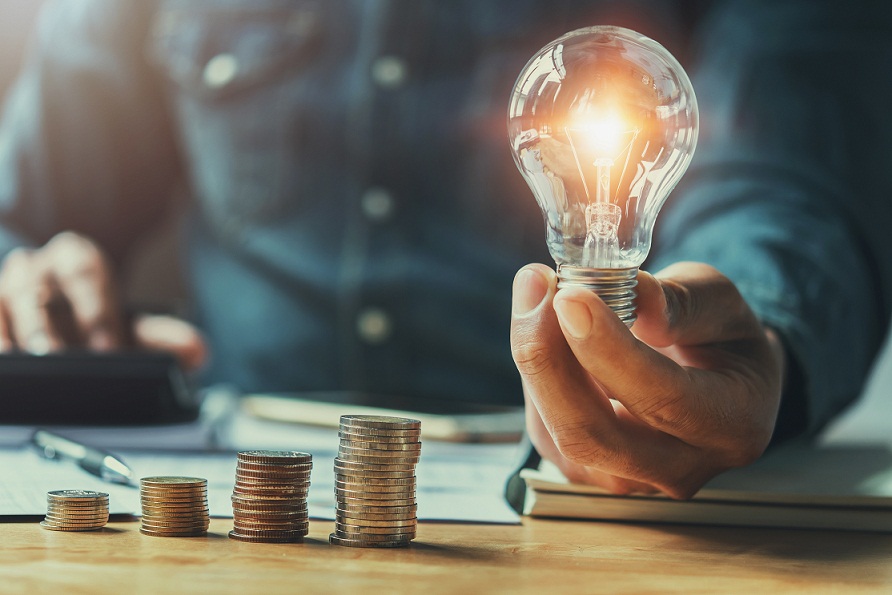Your electricity bills are going up.
Year on year you’ve noticed significant price hikes.
In fact, bills are now over AUD $500 more expensive than they were a few years ago. Annual electricity bills cost the average person $1165 in the past. It’s now up to $1680 in some places.
That extra $500 makes a big difference in many households.
Clearly, there are considerable incentives for saving electricity. Money’s one thing. There are other considerations too though. Take the environment. We’re hearing about (and feeling the effects of) global warming now more than ever.
It’s in everyone’s interest to cut down on electricity derived from damaging fossil fuels. Indeed, Australia gets around 86% of its energy from coal and gas.
How do you do it? What steps can you take to use less electricity?
Keep reading to learn exactly how to save electricity at home.
How to Save Electricity at Home: 11 Simple Steps
There are clear incentives for saving on electricity consumption. Not only is it better for your bank balance, but the environment benefits too!
Here are 11 simple steps you can take to save electricity.
1.Make the Most of Natural Light

One of the best ways to reduce your electricity consumption is to stick to natural lighting.
Let’s face it; most people turn the lights on at the earliest convenience. Bedrooms, living rooms, front porches, you name it. We might even leave lights switched on when we leave the room. Heck, think of all the offices in big cities. The lights are perpetually turned on.
You can save a bunch of electricity from learning to love the sunshine instead. Open the curtains and let the light in! At the very least, switch lights off when they’re not needed.
Timers can make a big difference. Fitted to your lighting system, they’ll turn off automatically after
a certain period of time.
Likewise, sensors that detect movement are an increasingly common way of minimizing electricity
consumption. Lights turn on only when required!
2.Set the Mood with Candles
Everyone loves a candle, right?
The low lighting, the mood setting, the ambiance. What’s not to like?
Embrace the old-fashioned way of producing light at night. Buy a load of candles for your home and set them up in areas you’d traditionally turn the lights on. Living rooms, bathrooms, and kitchens make particularly great candle-lit spaces!
You don’t have to do it every night.
You could try using candles once or twice a week instead of ordinary lighting. You’ll be amazing at the energy savings and might even enjoy yourself in the process.
3.Replace Your Lightbulbs

Traditional incandescent lightbulbs are energy inefficient.
That’s because most of the energy they make is emitted through heat, not light. Compare that to LED lightbulbs, which operate differently. They emit light in a much more efficient way, saving you electricity in the process.
It saves you money in the process. For instance, in the US, using an incandescent bulb for 5 hours a day over 2 years costs around USD $32. An LED used for the same duration costs just $12.
Take the initiative in your house and invest in new, energy efficient lightbulbs. They might set you back a pretty penny up front, but you’ll get the money back in energy savings.
And the environment will thank you too!
4.Hangout in Specified Rooms at Night
This tip’s another lighting-related way to reduce electricity consumption at night.
Families that spend time in separate rooms in the evenings use more electricity. More rooms require more lighting. You could decide as a family to hang out in particular areas of the house at night instead.
This will bring you closer as a family. It will cut energy consumption in the process!
You could go one step further and light these rooms with candles instead! Why not make an evening of it? Have themed evenings, special candlelit dinners, or tell ghost stories in the eerie light!
5.Unplug & Use Fewer Appliances

A simple step you can take right now is to turn off and unplug your appliances.
They’re using electricity the whole time they’re plugged in. Even when they’re turned off. Crazy, right? Try to unplug anything and everything whenever they’re not being used.
Think computers, laptops, TVs, lamps, kettles, toasters…you name it, unplug ‘em!
It’s easy to forget. We all do it. But it’s a giant waste of energy and your money.
6.Use Cold Water
Hot water takes energy to heat. It takes a lot of energy to heat it up.
You can save a bunch by using more cold water instead. Take a cold shower (it’s good for you!), a cooler shower, and/or limit the length of time you’re in there.
Showers are better than baths though. If it’s a choice between a hot shower and a hot bath, go for the shower!
You could also insulate the pipes in your home. They may be insulated anyway. But fitting an insulating pipe sleeve, wherever they’re bare, is a simple step that can save precious dollars each year.
Wash your clothes in cold water too!
The use of less water is equally beneficial. Modern societies use excessive amounts of water every day. We take it for granted. Using less of it is always a good thing.
7.Get Double Glazing

Old-fashioned single-glazed windows are awful insulators.
Your house gets crazily hot in summer, and freezing cold in winter. Your energy consumption (for heating and air conditioning) goes through the roof as a result.
It’s in the interest of everyone to replace them with double glazing (or even triple glazing!). Generally speaking, this isn’t a cheap home-improvement.
But you’ll benefit from considerable savings on energy bills each year. Likewise, you’ll have added value to your house if/when you come to sell it.
8.Improve Your Home’s Insulation
Another step you can take at home is to improve the insulation.
Poor insulation is bad all-round. In winter you’ll lose heated air; in summer you’ll lose cool air. You’ll be too hot in the hot months and too cold in the cold months. You spend money and waste energy at every turn.
Among other things, look out for cracks in window frames and under doors. Hiring a contractor can help you figure out what work needs doing.
For any work that you do yourself, try to source high-quality materials. You could try www.ablesales.com.au. They offer a range of construction equipment and resources.
9.Turn off the Air-Con

Air-conditioning can make the summer months bearable.
When it’s boiling hot outside, the cool air indoors can be a lifesaver. But using it excessively is a major drain on electricity. You can spend masses on staying cool.
Try to avoid going overboard with the air-con. Do it the old-fashioned way and open your windows! Or get outside and find an ocean or river to swim in.
10.Be Sparing with the Thermostat
Try turning your thermostat down in winter.
Sure, keep the temperature warm enough to stay comfortable. But most households tend to set the temperature too high in the cold months. Try taking it down a notch from roasting heat, to comfortably
warm!
You probably have more than enough warm clothing to compensate for the drop in temperature anyway. If you can walk around the house in midwinter in shorts and a t-shirt, then consider making some changes.
Turn down the heating and pull on a jumper!
11.Use a Dishwasher

You might be surprised at this one.
There’s great news for anyone who hates doing the dishes (that’s everyone, right?).
However, it’s true: using a dishwasher is more efficient than hand-washing your dishes in almost every way. Modern dishwashers can save you 5,000 gallons of water and USD $40 in utilities every year. It turns out dishwashers are pretty green!
However, that’s generally only true with newer, energy star certified, models. Older dishwashers are less efficient and can waste water.
Oh, but don’t pre-rinse your dishes before loading them. That’s a big no-no in terms of waste. The newer models can handle little bits of food too.
Time to Get Saving
There you have it: how to save electricity at home in 11 simple steps.
Unfortunately, the cost of electricity is on the rise in Australia. The last few years, in particular, have seen significant increases in annual bills. Hopefully, the information here has provided you with some solid ideas on how to save!
Make the most of natural light, use candles when possible, and install new light bulbs. Have specified family hangout rooms for night-times, unplug your appliances, and use cold water where possible.
Double glaze your windows, improve your insulation levels and turn off the air-con. Turn the thermostat down in winter, and use your new dishwasher to maximum effect!
With all of these steps in mind, you’ll be saving electricity, money and the environment in no time at all! Good luck!
Did you like this piece? Be sure to check out the rest of our home improvement articles here!






